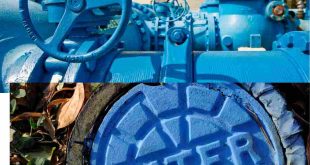Introduction to Potable Water Treatment Processes Potable water treatment is a multi-step process designed to transform raw water into safe, clean drinking water. This process is governed by stringent water quality regulations established by organizations such as the World Health Organization (WHO), the U.S. Environmental Protection Agency (EPA), and the …
Read More »Boiler Chemistry
RO Plant Reverse Osmosis System
Introduction When it comes to obtaining clean and purified water, the reverse osmosis (RO) system is a popular choice for many households and industries. Reverse osmosis utilizes a fascinating process to remove impurities and contaminants from water, providing high-quality drinking water and various industrial applications. In this article, we will …
Read More »Maintenance Management for Water Utilities
Maintenance Management for Water Utilities Efficient maintenance management is essential for water utilities to ensure the uninterrupted delivery of clean and safe water to communities. The complexity of water distribution and treatment systems demands a comprehensive and proactive maintenance strategy. This article delves into the critical components of maintenance management, …
Read More »Water Chemistry Practices in Thermal Power Stations
Water Chemistry Practices in Thermal Power Stations Water chemistry plays a critical role in the safe, efficient, and reliable operation of thermal power stations. Proper chemical control not only maximizes equipment life and thermal efficiency but also minimizes corrosion, scaling, fouling, and environmental impact. This article provides an in-depth overview …
Read More »Reverse Osmosis Water Filtration System RO Plant Working
Nowadays Reverse Osmosis Water Filtration System ( water softening RO Reverse Osmosis plant ) is widely used in both domestic and industrial use. In homes, reverse osmosis drinking water is used. in industry, Reverse Osmosis Water Filtration System is installed to provide feed water to the steam boilers and other …
Read More »Boiler Blowdown types and Boiler Blowdown calculation
What is boiler blowdown? Boiler blowdown means a certain volume of water is blown off through the blowdown valve and is automatically replaced by feed water to maintain the desired level of total dissolved solids (TDS) in the boiler water. Boiler feedwater usually contains a lot of dissolved and undissolved …
Read More »Role of Chemistry in a Power Plant
Today we will discus about the role of Chemistry in a Power Plant Boiler and why it is important to maintain chemistry in the power plants. As we know much of the equipment is made of metals that are expected to have a long life in power stations with little or …
Read More »Boiler Water Treatment Basic
Boiler Water Treatment is necessary to Produce quality steam on demand and depends on properly managed water treatment to control steam purity, deposits, and corrosion. There are two main types of boiler feed water treatment Internal boiler Water Treatment method and external boiler water treatment. A boiler is the sump …
Read More »PH determination methods By pH meter
Theory of PH The quantitative measurement of the acidity or basicity of a solution is called pH of the solution. It is defined as the negative logarithm of hydrogen ion concentration of a solution. pH = -log [ H+ ] If the pH of …
Read More »Steam Boiler Alkali Boil out Procedure
Boiler Alkali boil out is carried out to remove material such as lubricants, oil, and rust. During the manufacturing of seamless steel tubes, mill scales are bound to be formed, and some of these can remain inside. During fabrication and erection of the pressure parts, some amount of oil and …
Read More » Boilersinfo Boiler and Mechanical Power Digital Library
Boilersinfo Boiler and Mechanical Power Digital Library









